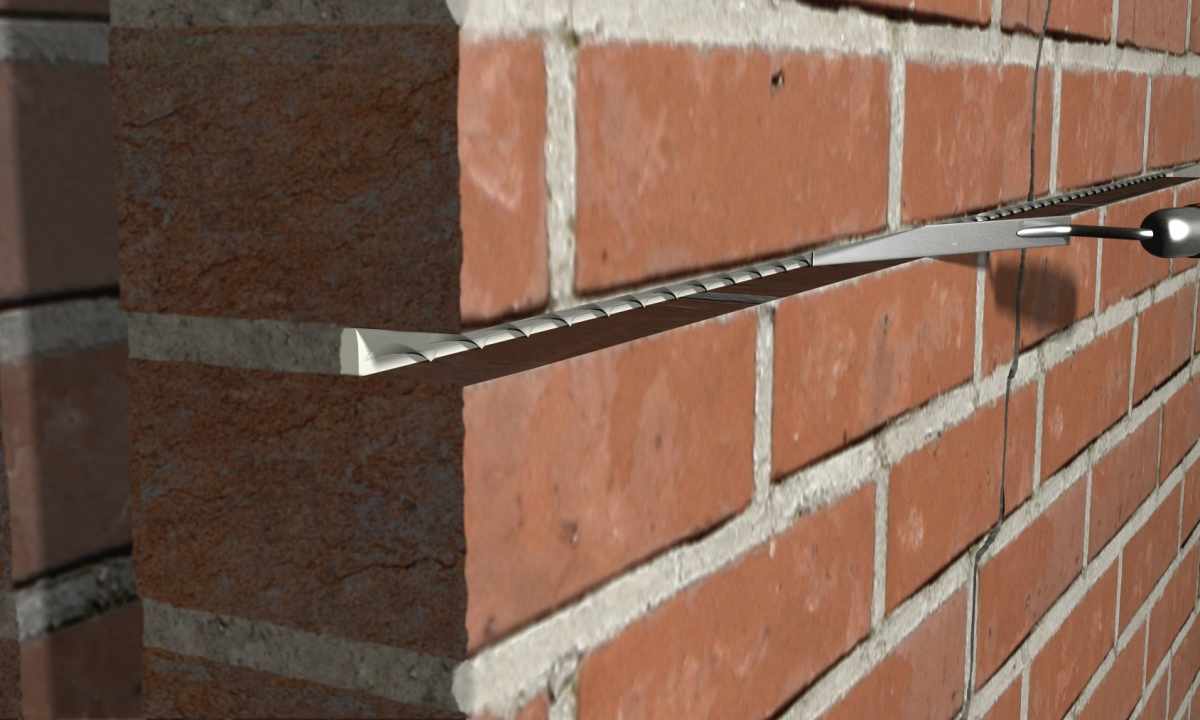The brickwork can be carried to discharge of eternal things. Despite the thousand-year history, it continues to occupy one of the main places in construction. Contrary to the seeming simplicity, bricklaying has the subtleties, without knowing which, it is impossible to put strong and beautiful construction – whether it be the house, the furnace or stone fence.
It is required to you
- - ceramic brick;
- - cement;
- - sand;
- - bricklayer's tool (trowel, hammer-kirochka, lacing and so forth);
- - level;
- - rail-poryadovka;
- - capacity for solution stirring.
Instruction
1. Prepare the basis for laying. His Vyrovnite across, close up the hollows which are available on surface, lay if necessary waterproofing and so forth.
2. Establish from two parties of future wall of rail-poryadovki, check their vertical position by means of plumb. The cord tense between the corresponding divisions has to be horizontal, pass across the external line of future wall, without reaching it on 5-8 mm and to be located on distance of 75-78 mm from the basis (height of the same kind of laying).
3. Prepare masonry mortar with ratio of components 1:4 (cement: sand) or 1:1:3 (cement: lime: sand). Solution with lime turns out more flexible and longer keeps the working properties. In the beginning mix sand with cement, then add water with the divorced lime and well mix mix.
4. Humidify bricks with water. It is desirable to make it in advance – watering them in stack from hose or bucket or dipping each brick for several seconds into water. The wetted brick should not have dry surfaces, but at the same time on it there should not be water in the form of film.
5. Start laying, since edge of wall. Put on the basis solution bed for several bricks 15-20 mm high and 200-220 mm wide (for header course) or 80-100 mm (for stretcher course). Lay on it flatwise (on "bed") the first brick and press it into solution. His Vyrovnite so that its side edge was located near rail - poryadovka, and external passed nearby (at distance of 5 mm) with the tense cord, settling down parallel to it. Take the second brick, apply solution on its side face and lower near the first, pressing to it side face. Lay brick on cord, leveling it if necessary easy percussions of the handle of trowel. In this way lay all row. Perenatyanite cord is one row higher.
6. Begin the second row of laying with that corner on which have finished the first row. Stacking it, provide bandaging of seams. There are two types of bandaging – single-row and multirow. At the first one is the share of one stretcher course tychkovy. At multirow bandaging on several stretcher courses (at most – 6) one tychkovy keeps within. At the same time joints in the next stretcher courses move on the relation to each other on half-brick (125 mm). Joints adjoining lozhkovy and header course move on quarter of brick (60 mm). The parameters of bandaging specified above are right for whole-brick wall. Control vertical position of corners of wall on rail-poryadovke or plumb, horizontal position of ranks – on the tense cord.
7. Having laid several rows, make pointing. It is necessary for consolidation of sutural solution and giving to laying of the accurate drawing. Lacing is carried out by means of special purpose tools (lacings) which working surface has various form – convex, concave, triangular and so forth. The tool nestles working edge on seam and is carried out along it.

